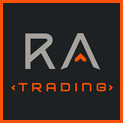
High-frequency trading (HFT) has evolved into a complex, yet lucrative, arena within the financial markets. While the risks and volatility are not for the faint-hearted, the potential rewards attract many seasoned traders, hedge funds, and institutions. According to a 2021 report by the Securities and Exchange Commission (SEC), HFT account for approximately 50% of trading volume in U.S. equity markets, highlighting its significant presence. Exploring strategies ingrained in an understanding of both technology and market behavior can lead to successful outcomes.
Firstly, technology forms the backbone of high-speed trading. Having state-of-the-art infrastructure, like proximity-hosted servers and low-latency networks, can make a substantial difference. This equipment minimizes the time it takes for orders to be executed, allowing traders to capitalize more effectively on fleeting market inefficiencies. According to a study by the TABB Group, low-latency infrastructure can boost profits by up to 30%. Therefore, investing in advanced technology is often non-negotiable for those serious about succeeding in this domain.
Second, algorithms play a crucial role in executing large numbers of trades at remarkable speeds. These sophisticated programs can rapidly analyze vast datasets, identify patterns, and execute orders without human intervention. Designing an effective algorithm often involves a combination of statistical arbitrage and machine learning techniques to forecast price movements and capture short-lived opportunities. Constant refining and debugging of algorithms ensure they remain robust in the ever-evolving market environment.
Another strategy involves leveraging data analysis. High-frequency traders thrive on data – both historical and real-time. By employing quantitative analysis, they can identify minute price discrepancies across different markets or asset classes. Backtesting strategies against historical data is vital to validate the effectiveness of an approach before deploying it in live markets. Additionally, real-time monitoring allows traders to swiftly adapt their strategies as market conditions shift.
Risk management cannot be overstated. Given the volume and velocity of trades, even minor errors can result in significant financial losses. Implementing stringent risk controls, such as setting stop-loss limits and diversifying trading patterns across different markets, is essential in mitigating potential downsides. Furthermore, comprehensive stress tests offered by platforms like MATLAB Financial Instruments Toolbox can spotlight vulnerabilities under various market scenarios.
Next, gaining an understanding of the regulatory landscape is necessary for navigating this fast-paced environment. Different jurisdictions have unique regulations concerning financial markets and trading activities. Traders should stay updated with the latest compliance requirements to avoid penalties or being barred from markets. The technology-driven nature of HFT means it’s particularly sensitive to regulatory changes, such as those concerning market access and data usage.
Lastly, competition in high-frequency trading is intense. Companies like Virtu Financial and Tower Research Capital represent some of the top players, driving innovation through enormous investments in their technological capabilities and research teams. To remain competitive, a relentless pursuit of innovation and efficiency is necessary. Exploring novel strategies, such as market-making and latency arbitrage, and leveraging big data can offer competitive edges.
Success in this challenging arena demands a combination of technological investment, algorithmic ingenuity, rigorous data analysis, robust risk management, regulatory awareness, and a focus on innovation. When these components are harmonized, high-frequency trading can offer significant opportunities and rewards.
– The Radium Team

